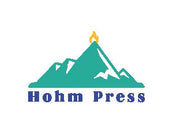Ready to Wean
Hohm Press
Pages: 32 pages
Size: Paperback, 6 X 8.5 inches
ISBN: 978-1-935387-30-5
The transition from nursing to weaning is a rite of passage. It can either be a time full of stress, regret and confusion, or a joyous celebration of growth.
Ready to Wean is for mothers and nursing children, to help them both communicate their deep love and respect for one another. The author believes that it is never too early for moms and dads to talk to their baby with tenderness and dignity, and to explain that nursing together is a cherished and special time. Yet, when mother no longer chooses this mutual task, or for health or other reasons cannot continue, then it is better for parent and child to begin the weaning.
There is no other book like this, although many adult books are devoted to the process of weaning. Ready to Wean is a children’s picture book, designed to empower mothers in the weaning process. The friendly text reassures and prepares the child, in a confident way, for this new stage of growth, and bolsters mother’s confidence that she will continue to grow with her child, beyond this particular form.
Already, national and state WIC (Women, Infants and Children) agencies are asking about the appearance of this book, calling it a crucial addition to the literature. Without making any general statement about how long nursing should continue, the book cleverly and gently allows each mom to insert her own deadline date, and encourages her to start planning for this date with her child. The author knows that parents and children will be sharing this bonding experience differently, and so she suggests many lovely, nurturing alternatives that babies and young children can relate to as the date approaches.
Ready to Wean Empowers Mother & Baby while Supporting Intimacy in the Process of Weaning A Book for Nursing Moms; State Agencies for Women and Children; Hospital Lactation Programs; La Leche League moms and groups.
*Dangling Red Earrings would be an object of fascination for a nursing baby, and one which mom might need to remove during breastfeeding. Their return thus symbolizes a woman’s transition to a new phase in her mothering.


